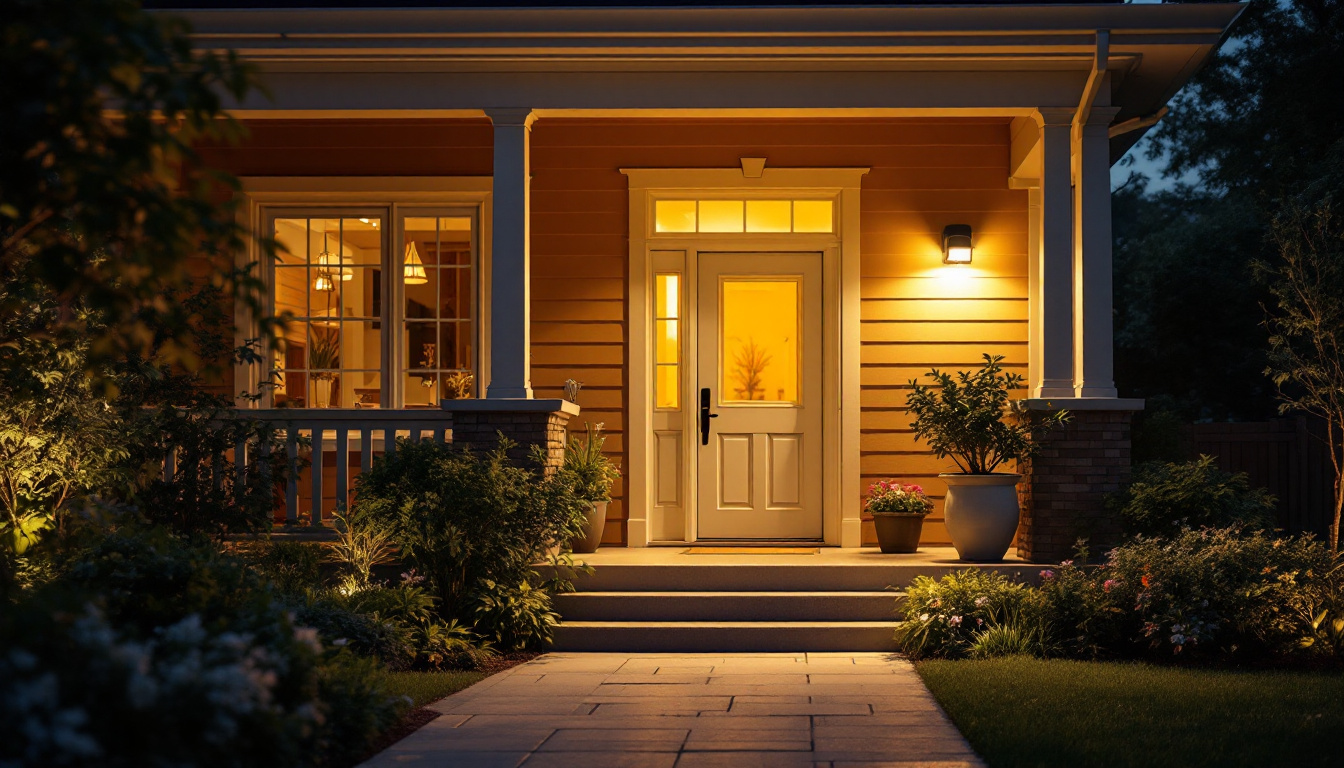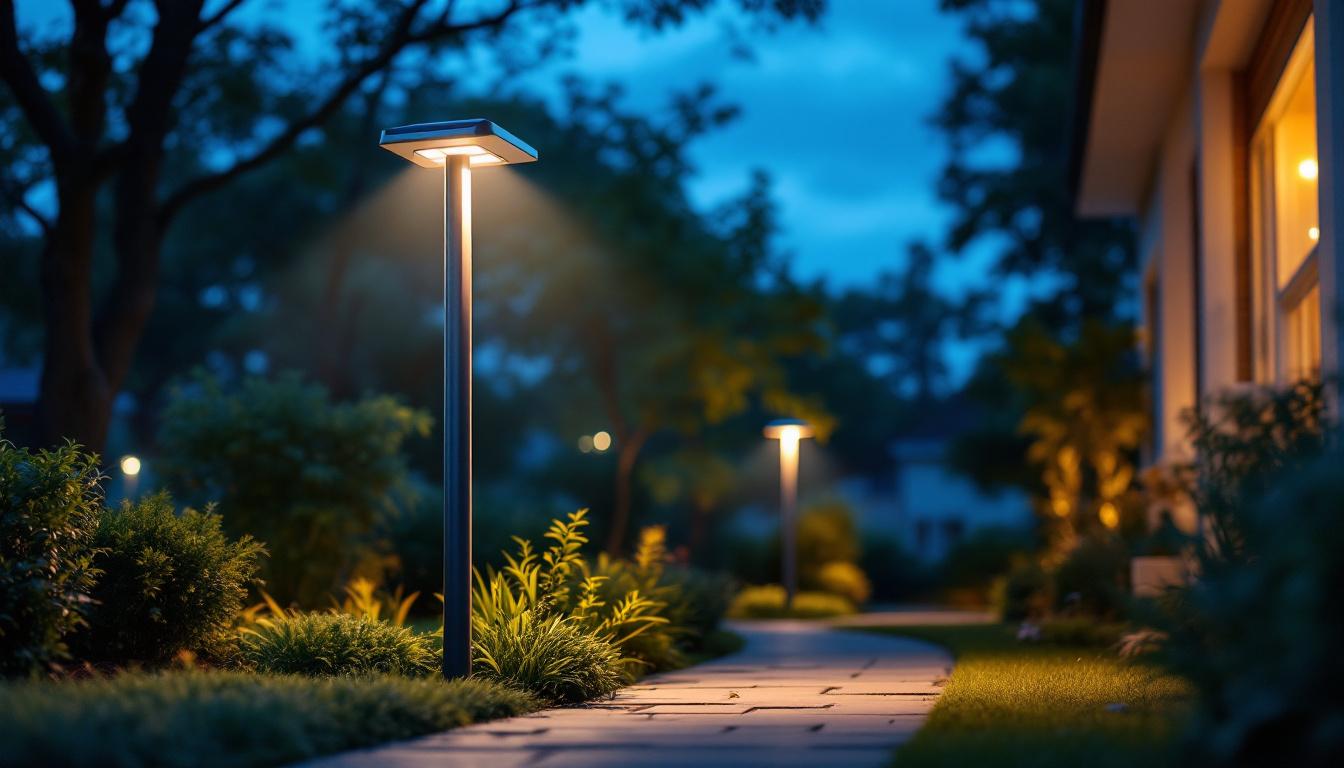
In the world of outdoor lighting, motion detector porch lights have emerged as a popular choice for homeowners looking to enhance security and convenience. For lighting contractors, understanding the nuances of these fixtures can not only improve installation efficiency but also elevate customer satisfaction. This article provides essential tips and insights for lighting contractors to consider when working with motion detector porch lights.
Before diving into installation techniques, it’s crucial for contractors to grasp how motion detector technology works. These lights utilize sensors to detect movement within a specified range, triggering the light to illuminate when someone approaches. The two primary types of sensors used in these fixtures are passive infrared (PIR) sensors and microwave sensors.
PIR sensors are the most common type found in residential motion detector lights. They work by detecting changes in infrared radiation, which occurs when a warm body, such as a person or animal, moves within the sensor’s field of view. This type of sensor is highly effective in outdoor settings, as it can cover a wide area with minimal false alarms.
When installing PIR sensors, it’s important to position them correctly. They should be mounted at a height of about 6 to 8 feet, angled downward to maximize coverage while minimizing the chances of false triggers from passing cars or trees swaying in the wind. Additionally, the sensitivity settings can often be adjusted to fine-tune the sensor’s responsiveness, allowing for customization based on the specific environment. For instance, in areas with frequent wildlife activity, lowering the sensitivity can help reduce unnecessary activations, ensuring that the lighting serves its intended purpose without interruption.
Microwave sensors operate differently by emitting microwave signals and measuring the reflection off moving objects. They can detect motion through walls and other obstacles, making them suitable for more complex installations.
While these sensors can provide broader coverage, they may also lead to more false alarms, particularly in busy areas. Therefore, careful consideration of placement and sensitivity settings is essential to ensure optimal performance. Moreover, microwave sensors often come equipped with advanced features such as adjustable detection ranges and time delays, allowing users to tailor the system to their specific needs. This flexibility can be particularly beneficial in commercial settings where foot traffic varies significantly throughout the day, ensuring that the lighting system adapts to changing conditions and occupancy levels.
Selecting the appropriate motion detector porch light for a specific application is vital. Factors such as brightness, coverage area, and energy efficiency should all be taken into account. Here are some key considerations to guide contractors in making informed choices.
The brightness of a motion detector porch light is measured in lumens. For typical residential applications, a light output of around 700 to 1,000 lumens is generally sufficient. However, for larger areas or spaces requiring enhanced security, lights with higher lumen outputs may be necessary.
Contractors should also consider the color temperature of the light. Warmer tones (2700K to 3000K) create a welcoming atmosphere, while cooler tones (4000K and above) may enhance visibility and security. Matching the light temperature to the homeowner’s preferences can significantly impact satisfaction. Additionally, it’s worth noting that some modern motion detector lights come with adjustable color temperature settings, allowing homeowners to customize the ambiance based on their needs or the time of day. This versatility can be particularly appealing for those who enjoy outdoor gatherings or want to create a specific mood in their outdoor spaces.
The coverage area of a motion detector light is determined by the sensor’s range and the light’s placement. Most sensors have a detection range of 20 to 30 feet, but this can vary. It’s essential to assess the specific area where the light will be installed to ensure adequate coverage.
Contractors should also consider any potential obstructions, such as trees, fences, or architectural features, that may hinder the sensor’s ability to detect movement. Proper planning can help avoid blind spots and ensure comprehensive coverage. Furthermore, it is beneficial to evaluate the angle of the sensor’s detection field, which typically ranges from 90 to 180 degrees. A wider detection angle can help capture movement from various directions, providing an added layer of security. Some advanced models even offer adjustable sensors, allowing for fine-tuning of the detection area to suit unique property layouts and enhance overall effectiveness.
Proper installation is critical for the effective operation of motion detector porch lights. Following best practices can help contractors avoid common pitfalls and enhance the longevity of the fixtures.
The placement of motion detector lights is paramount. Ideally, they should be located at entry points such as doorways, garages, and driveways. Additionally, positioning lights at a height that minimizes the risk of vandalism while maximizing detection range is crucial.
Contractors should also consider the angle of the sensor. A downward angle can help capture movement effectively while reducing false triggers from passing vehicles or animals. Testing the sensor’s range before finalizing the installation can help ensure optimal performance. Furthermore, it’s beneficial to assess the surrounding landscape; overhanging branches or nearby shrubs can obstruct the sensor’s view and lead to inefficient operation. Ensuring a clear line of sight will not only improve detection accuracy but also enhance the overall security of the property.
When installing motion detector porch lights, ensuring proper wiring and power supply is essential. Most models require a standard 120V power supply, but some may be compatible with low-voltage systems. Contractors should always refer to the manufacturer’s specifications for wiring requirements.
Additionally, using weatherproof connectors and junction boxes is crucial for outdoor installations. This helps protect the electrical components from moisture and other environmental factors, enhancing the durability and reliability of the lighting system. It’s also advisable to consider the use of surge protectors to safeguard the lights from electrical spikes, which can occur during storms or power outages. Proper grounding of the fixtures is another important aspect that can prevent electrical shocks and enhance safety for users. By taking these precautions, contractors can ensure that the motion detector lights not only function effectively but also stand the test of time against the elements.
Many motion detector porch lights come with adjustable settings that allow contractors to customize their operation. Understanding these settings is key to optimizing performance and meeting homeowner expectations.
Most motion detectors feature sensitivity adjustments that allow the homeowner to control how easily the sensor detects movement. Setting the sensitivity too high may result in false alarms, while too low may cause the light to fail to activate when needed. Contractors should demonstrate how to adjust these settings during installation to ensure homeowners are comfortable managing their lighting system.
Time delay settings determine how long the light remains on after detecting motion. This can typically range from a few seconds to several minutes. Contractors should discuss the homeowner’s preferences regarding duration, as this can significantly impact the usability of the light. A longer time delay may be beneficial for areas where people frequently pass through, while shorter delays may suffice in less trafficked zones.
To ensure motion detector porch lights function optimally over time, regular maintenance is essential. Educating homeowners about maintenance can enhance their satisfaction and reduce service calls.
Dust, dirt, and debris can accumulate on the sensor, obstructing its ability to detect movement. Homeowners should be advised to clean the sensor regularly with a soft cloth to maintain its effectiveness. This simple maintenance task can significantly extend the life of the fixture.
Over time, plants or other objects may grow or shift, potentially obstructing the sensor’s field of view. Contractors should recommend periodic checks to ensure that nothing is blocking the sensor and that it continues to function properly. This proactive approach can help avoid unnecessary frustrations for homeowners.
Even with the best installations, issues may arise with motion detector porch lights. Understanding common problems and their solutions can equip contractors to address homeowner concerns effectively.
One of the most common issues with motion detector lights is false alarms, which can be caused by various factors, including sensitivity settings, environmental conditions, or obstructions. If homeowners experience frequent false triggers, contractors should first review the sensitivity settings and suggest adjustments as needed.
Additionally, evaluating the installation location for potential obstructions, such as moving branches or animals, can help mitigate this issue. In some cases, relocating the sensor may be necessary to reduce false alarms.
If a motion detector light is not activating consistently, several factors may be at play. First, contractors should check the power supply and wiring to ensure everything is functioning correctly. If the wiring appears intact, the issue may lie within the sensor itself or its settings.
Encouraging homeowners to reset the light or consult the manufacturer’s troubleshooting guide can often resolve these issues. If problems persist, it may be time to consider replacing the unit.
Motion detector porch lights offer a practical solution for enhancing outdoor security and convenience. By understanding the technology, selecting the right products, following best installation practices, and providing maintenance tips, lighting contractors can ensure successful installations that meet homeowner needs. As the demand for smart and efficient lighting solutions continues to grow, staying informed and adaptable will be key to thriving in this evolving market.
By applying these quick tips, lighting contractors can enhance their expertise and provide exceptional service, ultimately leading to satisfied customers and successful projects.
Ready to elevate your lighting projects with the best motion detector porch lights on the market? Look no further than LumenWholesale. Our commitment to quality and affordability ensures that you get spec-grade lighting products without the hefty price tag. With our vast selection, you can find the perfect lighting solutions that meet the highest industry standards and cater to all your installation needs. Plus, enjoy the convenience of free shipping on bulk orders, making your purchase even more cost-effective. Don’t compromise on quality or value; choose LumenWholesale for Wholesale Lighting at the Best Value and light up your projects with confidence.

Discover the transformative benefits of solar LED lamp post lights and why they’re a must-have for every lighting contractor.

Discover why lighting contractors should prioritize the innovative A 19 bulb in their projects.

Illuminate your expertise with our comprehensive guide on garden landscape lighting.

Discover expert tips and strategies for lighting contractors to excel in the art of pendant lighting installation.